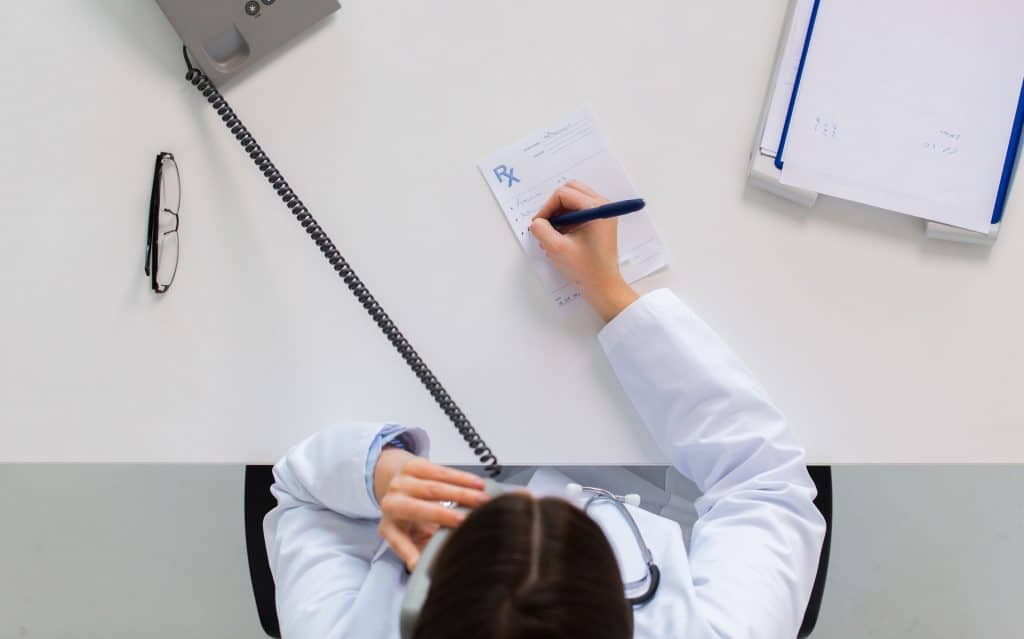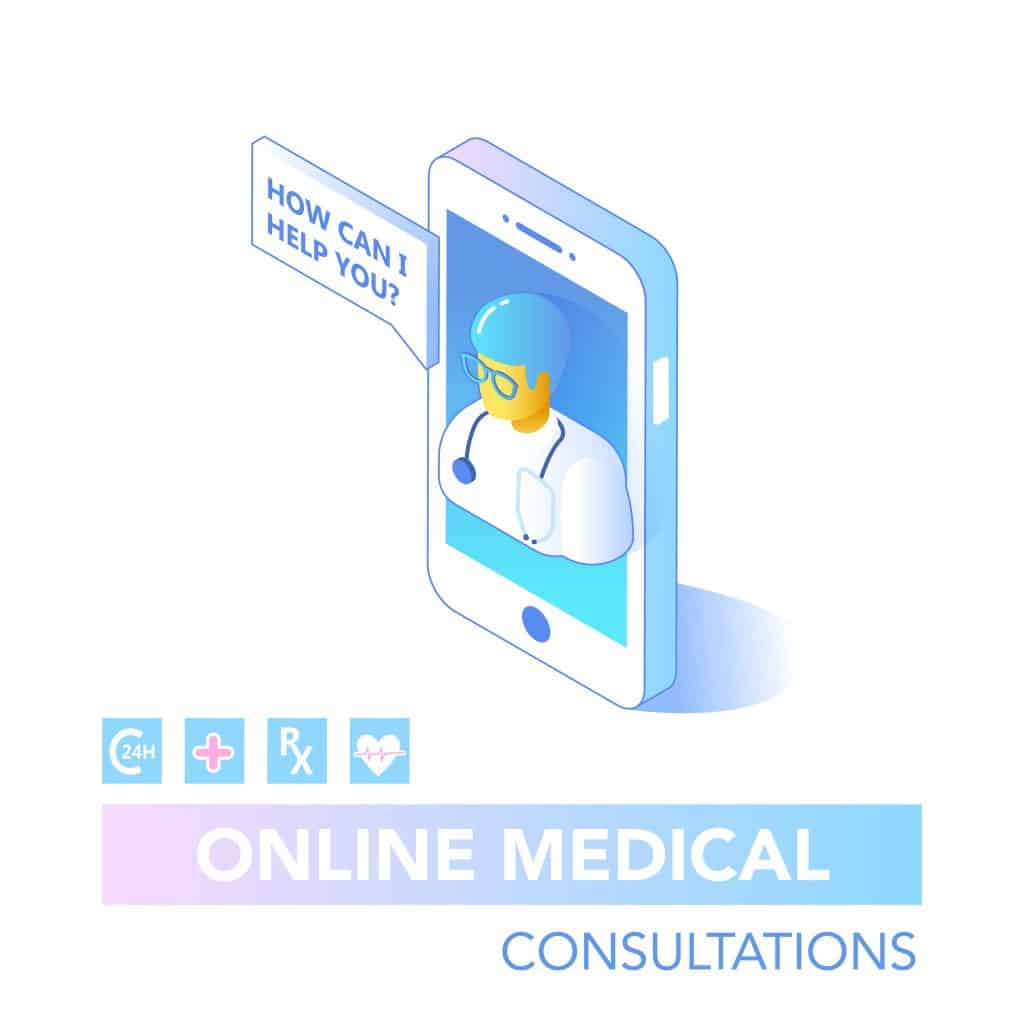Calling In a Prescription, Process, Requirements, Laws, Answers
Posted by Prescription Hope - See Editorial Guidelines (Last Updated On: Wed Apr 26 2023)
Filling a prescription sounds pretty straightforward. But, getting a prescription from the doctor’s office and making sure it gets to the pharmacy without damaging or losing it can often be a risky procedure. This can be troublesome for a patient’s health. Especially for patients suffering from social anxieties, memory-impaired challenges, or other limiting disabilities.
In these and other situations, your prescription can be called in by your practitioner. So, here we’re going to talk you through the whole process of calling in a prescription.
First, here’s a quick answer for you to take away, then we’ll get into some more detail on how it works, the requirements, and the laws around it.
What Is Calling in a Prescription? Calling in a prescription is when your physician calls your pharmacy to provide the details to fill your medications. Calling in prescriptions avoids the need for you to give a handwritten prescription to the pharmacy to get it filled. By law, calling in prescriptions is not valid for controlled substances.
Even a torn prescription is very often rejected and can only be filled if the doctor replaces it with a new one.
These minor problems can plague patients, causing a raft of inconveniences for everyone. So now, communication developments have made it possible to call in prescriptions, which negates the need for a hand-written prescription.
So, let’s give you some more details on this and why it can be ideal and useful in many ways. The following post will be helpful.

Calling In A Prescription
If your physician gives you a handwritten prescription, by law you will have to present this hand-written prescription at a pharmacy to get it filled.
It’s only through this you can get your medications. But as most of us know, because of how busy they are, doctors are not always the most neatly handwritten professionals. On occasion, this can make the pharmacist call the doctor’s office to double-check information and cause delays in filling a prescription.
This is where it may be ideal for you to request your doctor or physician to call in your prescription. If applicable, your doctor’s office can call your pharmacy and give them the prescription details for it to be filled for you.
So, instead of giving you a handwritten prescription, your prescription will be called to your pharmacy, where you can then go and provide the requested details and get your medications – easy as that.
How Calling in a Prescription Works

When you call a pharmacy and before you start speaking, have you ever heard the automated voice message? This automated voice message provides you with options to choose from. These options usually ask if you’re a patient or physician.
The physician option is actually for calling in prescriptions, where physicians can easily leave a voice mail of a patient’s prescription unless it’s for specialized medications. So, the pharmacy can retrieve the prescription called in and provide appropriate medications.
However, there are several things to be considered by both the physician and the patient when calling in a prescription. Let’s take a closer look at those.

Important Information When Calling In a Prescription
The following information needs to be given to the relevant parties when calling in a prescription.
Firstly, if you request to call in your prescription, you will have to provide your doctor with your pharmacy’s details.
After obtaining the pharmacy’s information, the physician or the prescriber will have to provide the pharmacy with the following information when calling in for a prescription.

- Patients name – including middle names. It’s recommended to spell the name if it’s unusual or can be mistaken
- Patients Date of Birth
- Active phone number of the patient
- Current and active home address
- Drug/Medication name
- Drug strength
- Drug dosage
- Direction for use (dose and frequency of administering)
- The route for administering
- Quantity
- Refills – if needed
- The purpose of the medication/drug
- If a generic substitute is permitted
Apart from this information, the pharmacy will also need the physicians or prescriber’s details, such as:
- The full name of the prescriber, with an identifier
- Name of the clinic
- DEA number
- The name and role of the caller if it’s someone other than the practitioner
- Phone number of the prescriber if the pharmacists need to verify details on the prescription
Note – When providing information such as phone number and address, make sure they’re accurate, current, and active.
This is important because it will not only make sure the pharmacy fills the right prescription for you, but they can also get in touch with you if there are any issues with your prescription or the medication provided.
With all these details provided and exchanged appropriately, calling in prescriptions could be one of the easiest ways of filling prescriptions for patients.
However, the DEA specifies that a prescription for a controlled substance cannot be called. Prescriptions for controlled substances have to be written in ink or indelible pencil or typed to be valid. Such prescriptions also require a signature by the practitioner on the date when the prescription is issued.
Benefits Of Calling Prescriptions
Here are some of the most common benefits for calling in prescriptions:
1. Avoid Problems Related To Losing Prescriptions.
Paper prescriptions are small, and they’re easy to misplace or lose. When patients lose prescriptions, it can be pretty troublesome to get a replacement for it.
If the practitioner is unavailable to write a new prescription, the prescription could be left unfilled for days, weeks, or even past the medication required period.
It’s also an added hassle for practitioners and the pharmacy when dealing with patients’ lost prescriptions. So, calling in prescriptions is ideal for avoiding these situations.
2. Prevents Pharmacists From Making Prescription Drug Errors
According to the FDA, it’s estimated that 100,000 prescription drug errors are reported each year.
These errors happen mainly because many medications have spellings that look similar. For example, the medication Valtrex (valacyclovir) and Valcyte (valganciclovir), are both used for cytomegalovirus (CMV), but they’re used for completely different treatments.
When prescriptions are called or a voicemail is left, the pharmacist can always get back to the prescriber or practitioner to verify the details, rather than spending time trying to decipher what’s written on the prescription.
This also makes it easier for pharmacists to feel assured that they’ve filed the right medicine, and patients will also be safe from taking the wrong medications.
3. Physicians /Practitioners Can Easily Track a Patient’s Prescription Fulfillment
When patients leave with handwritten prescriptions, it becomes hard for a physician or practitioner to track if the prescription is filled. A doctor can check if a prescription is filled, but it’s another process in the chain to deal with.
By calling in a prescription, physicians and practitioners can track if the patients fill the prescription and counsel patients on medication management, fulfillment, and related problems.
4. Fewer Delays In Filling Prescriptions
One of the main issues with getting a prescription filled via a hand-written prescription process is that pharmacists will not easily be able to verify or double-check the information. Especially sensitive medication information such as strength, dose and the other multiple forms of medications available makes it difficult for pharmacists to fill a prescription efficiently.
But when calling in prescriptions, it’s easier to get the required information at once and make sure an accurate prescription filling process takes place.

The Future of Fulfilling Prescriptions
One area in which this may be linked to a seamless care process for patients is as an add-on to virtual doctor services. A doctor can now review your ailments and symptoms over video service, and potentially there will be a means to “add on” the service for getting a prescription.

Alternative Ways to Get Your Prescription Filled
If you’re struggling to get your regular prescriptions filled, mainly if you’re having trouble affording your medications, then that’s why organizations like Prescription Hope exist. To facilitate those in need in obtaining much-needed prescriptions through Patient Assistance Programs. Click here to enroll now and let us save you money on your prescription bills !
ENROLL



